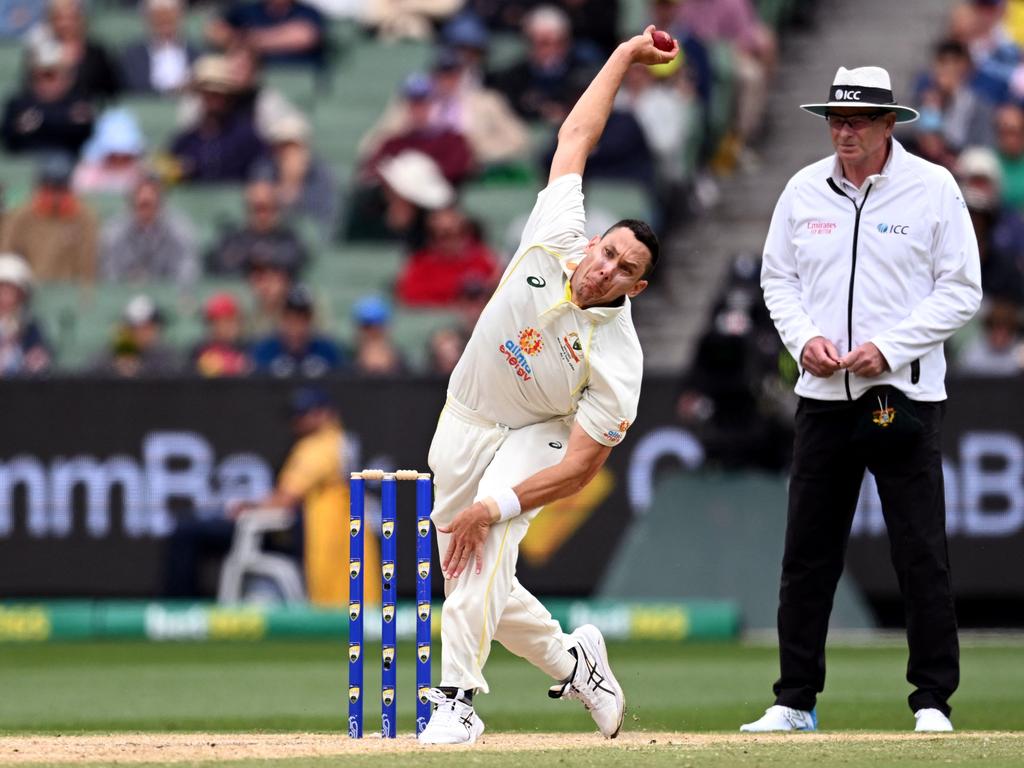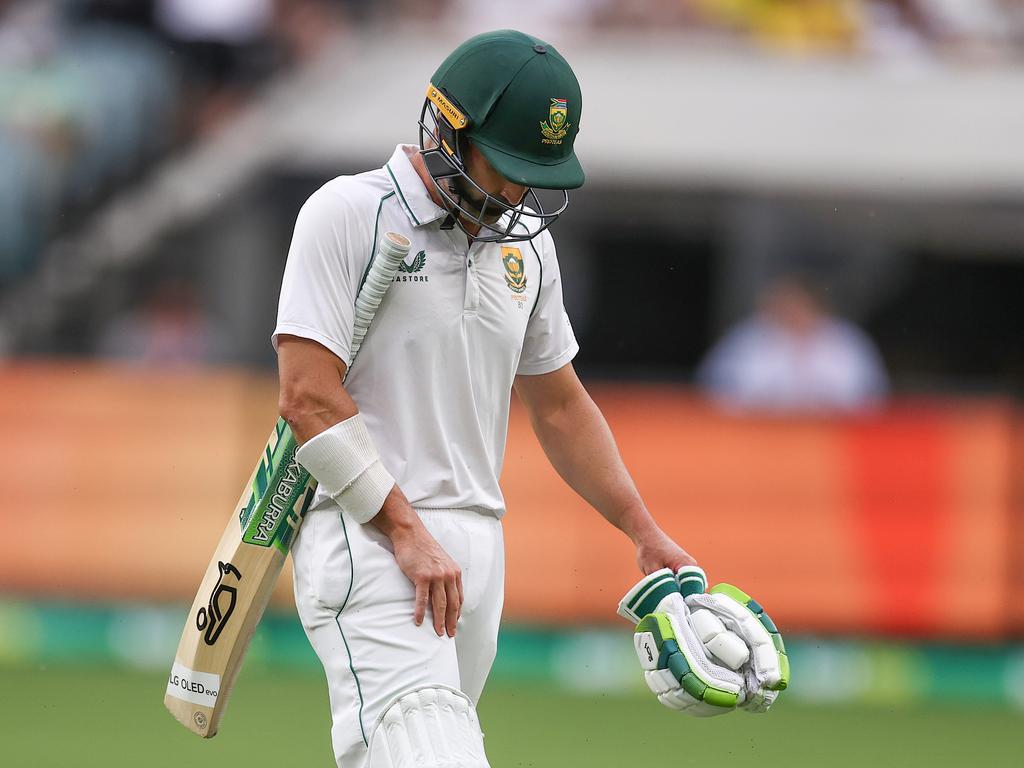Declining Test match standards could see major cricketing nations drop out of rotation
Concerns are mounting over the decline of one of sport’s oldest traditions as former powerhouses rapidly reduce to minnows.

Concerns are growing over the state of Test cricket following yesterday’s Boxing Day blowout, which saw Australia take another comfortable series win over a lacklustre touring side.
Neither South Africa or the West Indies showed enough to be threatening on Aussie soil this year. In an article published yesterday, news.com.au made note of the number of players from both touring sides opting towards short-form careers, leaving red-ball cricket standards to slowly deteriorate.
Kerry O’Keeffe suggested a move towards a 100 over per innings match played over four days to accommodate for the modern brand of player and keep interest alive.
However, cricket journalist Bharat Sundaresan has predicted a massive decline in the amount of Test cricket played as franchise T20 competitions and World Cups take over.
It has been almost two decades since the birth of the 20-over game, with Test cricket remaining the most prestigious format among the sport’s most dedicated followers. Purists were pat on the head and told not to worry about the future of multi-day cricket as modern T20 specialists quickly began to emerge throughout world cricket.
It is clear to see which way the tide is turning, with yet another franchise tournament launching next year in South Africa.
“This might not be a popular opinion but in the next five to 10 years, Test cricket will mainly be played by India, England and Australia,” Sundaresan said on SEN Breakfast.
“A lot of the other countries are struggling and South Africa is a prime example of that.
“There was all this build-up and this narrative that this is the big heavyweight clash of one and two (in the World Test Championship).
“The West Indies were supposed to be the weak point of the summer but now the West Indies don’t actually look so bad.”

After losing the first Test in under two days and collapsing short of Australia’s first innings total at the MCG, South Africa’s unfortunate capitulation this summer has reignited concern over the future of its long-form competitiveness.
Their batting order simply lacks the numbers to be threatening on Australian pitches — Elgar averages 37.89 in his career, Bavuma 34.31, and Rassie van der Dussen 30.16. Everyone else on tour averages in their 20s except Khaya Zondo, who averages 16.20 and Theunis de Bruyn at 19.50.
“It’s a pivotal time in South Africa as their new T20 league starts in January and that is supposed to be the one to fund South African cricket moving forward,” Sundaresan continued.
“They will then play less Test cricket, we know the West Indies are going to play very few Test matches in the next five years and a lot of key (New Zealand players) are already taking the freelance route.
“I don’t think the relevance of Test cricket will go away but the money will stay in these marquee series for the Ashes or when India plays England.”
New Zealand cricket analyst Garth Gallaway echoed those sentiments, noting the increasing gap in the standard of red ball cricket displayed by countries outside England, India and Australia.


“There is an A and a B grouping in Test cricket,” Gallaway said on SEN radio on Friday.
“I’d put India up there obviously with Australia (and) B is South Africa who have been so disappointing in this series.
“Pakistan and South Africa find it very hard to get crowds in (for Test cricket) and in NZ we usually get crowds of about 8,000.
“Australia, England and India is where it’s alive and well.
“Whether other sides are good to pick up the mantle, I’m not sure.”
During the coverage of day four at the MCG yesterday, O’Keeffe suggested the break times between sessions be cut down to inject some more energy into Test cricket.
“I‘d make them four day matches — I’d take a day off,” he said. “I’d dispense with the lunch break and I’d ask umpires and captains to hurry the game along.
“I’d have a half-hour break in the middle of the day, save 30 minutes there. Why have a 40 minute lunch break and a 20 minute tea break? We could break that up. And I would almost restrict the first innings to 100 overs each.”
The final Test of the summer begins January 4 at the SCG.




